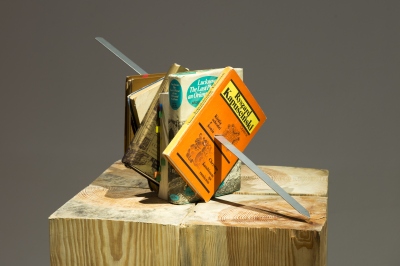Slavs and Tatars
Kitab Kebab (Kapuściński-Orbeliani)
Founded in 2006, Slavs and Tatars is an artist’s collective of artists founded by a Pole and an Iranian of American ancestry. They are interested in examining everyday life by looking at tradition, language, and customs, mainly in Eurasia. Despite touching on serious topics, their artworks are light-hearted and humorous, earning them the recognition of audiences and art critics in many places around the world. The group is also involved in publishing and curatorial activities. Their activity began with the search for books on linguistics and anthropology seen from a national and local perspective. They are the authors of numerous unusual publications. For example, their book Love Me, Love Me Not: Changed Names presents the names of 150 cities in Eurasia that have changed over the course of history; another – entitled Khhhhhhh – focuses on the role of the guttural r sound in Arabic, Hebrew and Slavic languages.
Books are also the subject of Kitab Kebab – an object showing books on a spit used to prepare kofta or kebabs. The suggestion contained in the title indicates that cognition does isn’t necessarily just an intellectual process – just like eating, it is a kind of absorbing and digesting content. The Polish language still uses the term “spiritual nourishment”, echoing such treatment of cognition. Non-intellectual learning is the subconscious decoding of symbols and images, of which there are plenty in Kitab Kebab: from book covers to intersecting lines evoking the order of writing letters (vertical and horizontal). The pop-cultural accents are equally important: as a popular dish of Middle Eastern cuisine, kebab is well recognized in large cities of the West, and now it appears in many national variants – after some modification, it has gained considerable popularity in Poland.
The books on display have been deliberately selected by the artists and illustrate cultural concepts that are characteristic of Eurasia and particularly important to them, such as concepts identity, languages, religions, and ideologies. Similarly, the authors of the books represent different nations, languages, and attitudes towards the surrounding reality.
